This website uses cookies so that we can provide you with the best user experience possible. Cookie information is stored in your browser and performs functions such as recognising you when you return to our website and helping our team to understand which sections of the website you find most interesting and useful.
Home Care In Burlington, ON

They say that your golden years are the best years of your life. For most older Canadians, that's how it should be - a time to relax, reflect, and live life in a familiar place. After all, senior citizens in our country have worked tirelessly to build a better economy, serve their communities, and raise families.
However, as seniors grow older, sometimes they cannot live independently without someone by their side to provide care. Unfortunately, many older Canadians aren't able to rely on their adult children for help. The reality in today's world is that family members do not have the skills or time to dedicate to caring for their parents. That's where Always Best Care Senior Services comes in.
Our in-home care services are for people who prefer to stay at home as they grow older but need ongoing care that family or friends cannot provide. More and more older adults prefer to live far away from long-term, institutionalized facilities and closer to the place where they feel most comfortable - their home. Home care in Burlington, ON is a safe, effective way to give your loved ones the care they need when they need it the most.

 Home Care Services
Home Care Services
- Home Care in Burlington, ON
- The Always Best Care Difference
- Types of In-home Care in Burlington, ON
- Benefits of Home Care in Burlington, ON
- Aging in Place: The Preferred Choice for Most Seniors
- Affordable Care Plans
- Compassionate Care. Trusted Caregivers
- Assisted Living Referral Services
- Taking the First Step with Always Best Care
 Service Areas
Service Areas
The Always Best Care Difference
Since 1996, Always Best Care has provided non-medical in-home care for seniors to help them maintain a healthy lifestyle as they get older. We are proud to have helped more than 25,000 seniors maintain higher levels of dignity and respect. We focus on providing seniors with the highest level of in-home care available so that they may live happily and independently.
Unlike some senior care companies, we genuinely want to be included in our clients' lives. We believe that personalized care is always the better option over a "one size fits all" approach. To make sure our senior clients receive the best care possible, we pair them with compassionate caregivers who understand their unique needs. That way, they may provide care accordingly without compromising their wellbeing.
The Always Best Care difference lies in life's little moments - where compassionate care and trustworthy experience come together to help seniors live a fruitful, healthy life. Whether you are an aging adult that can't quite keep up with life's daily tasks or the child of a senior who needs regular in-home services, Always Best Care is here to help.
“Thank you for hosting the Dementia Live session. I am so grateful for this opportunity”
“Always Best Care provided me with with very nice and practical care givers following my”
“I have terrific care for my father from Always Best Care The Personal Support Workers”
“My husband had a stroke/brain bleed almost 3 yrs ago & we have been exposed”
“Always Best Care Senior Services helps my loved one out with bathing and meal preparation”
“ABC helps my loved one out with bathing and meal preparation mainly, which is very”
“I am grateful that Always Best Care is here to help me. I am not”
“I am grateful that Always Best Care is here to help me. I am not”
“ABC has really helped ease my concerns and worries when caring for my loved one”
“We had a fabulous experience with Always Best Care Senior Services. We needed unexpected immediate”
“Amazing organization. Very pleased at every aspect. I’m over thousand miles away from my mother”
“I am a personal support worker at ABC, I’ve been working at ABC for about”
“I had to engage Always Best Care for assistance with my parents. From my first”
“In a difficult pandemic and job hiring environment they showed up every day on time”
“Thank you the team at Always Best Care! They were instrumental in helping us to”
“I have been caring for my 85 year old Mom in my home for just”
“I had to engage Always Best Care for assistance with my parents. From my first”
“Thank you to Always Best Care Senior Services for help with my grandmother after her”
“I had a wonderful experience with the team at Always Best Care! I was very”
“Always Best Care provided excellent service for my elderly mother after she had a fall.”
“Thank you for hosting the Dementia Live session. I am so grateful for this opportunity to understand what my loved one is going through and learn strategies to help them cope with dementia. It was nice to be in a room of people that understand, support and can relate to the up’s and down’s of coping with a loved one that has dementia.”
“Always Best Care provided me with with very nice and practical care givers following my recent knee surgery. Will totally use them again when the other knee or something else is done.”
“I have terrific care for my father from Always Best Care The Personal Support Workers ensure my dad remembers to take his medication and that he has lots of food to eat and enogh to drink. The managers are good at letting me know when they have to make a staffing change for the day. I have piece of mind and I know everything is going to be alright when I am away. Thanks to Always Best Care!”
“My husband had a stroke/brain bleed almost 3 yrs ago & we have been exposed to many agencies This particular agency had gone above & beyond to ensure ALL needs were met by finding just the right PSW for my hubby & our home environment. The personal touch provided, made both my husband & I feel that our struggles are real & the staff genuinely care. ALWAYS BEST CARE is just that... the best care. A special thank you to Coree!!”
“Always Best Care Senior Services helps my loved one out with bathing and meal preparation mainly, which is very important to have provided for her on a consistent daily basis. The office staff is always very consistent in getting back to me with emails and providing a helping hand. They have been extremely diligent in making sure we have the best care we can get so I’d certainly recommend them.”
“ABC helps my loved one out with bathing and meal preparation mainly, which is very important to have provided for her on a consistent daily basis. The office staff is always very consistent in getting back to me with emails and providing a helping hand. They have been extremely diligent in making sure we have the best care we can get so I’d certainly recommend them.”
“I am grateful that Always Best Care is here to help me. I am not sure what they could do better. They come and help me with transportation for appointments and errands. I like that they are courteous, pleasant and everything I was used to.”
“I am grateful that Always Best Care is here to help me. I am not sure what they could do better. They come and help me with transportation for appointments and errands. I like that they are courteous, pleasant and everything I was used to.”
“ABC has really helped ease my concerns and worries when caring for my loved one especially when im travelling. From the first connection with Steve to assigning PSWs to communicating with Coree my experience has been and continues to be amazing. Coree is exceptional in her work and always responds to our requests even on short notice. The PSW we have is also exceptional and goes above and beyond her duties. I could not have asked for more devoted help than from this company. Highly recommended. The are upfront, honest, trustworthy, and punctual. Great company.”
“We had a fabulous experience with Always Best Care Senior Services. We needed unexpected immediate care for my Mom and Corrie was able to get everything arranged for us right away. She was very understanding, explained everything and willing to do anything she could to help. The caregivers that helped my Mom were wonderful and made her feel very comfortable. Would highly recommend them.”
“Amazing organization. Very pleased at every aspect. I’m over thousand miles away from my mother and I feel blessed to have this group be on call for my mother when needed. Kindest Regards, Oliver”
“I am a personal support worker at ABC, I’ve been working at ABC for about 10 months now. One thing I can recommend about working at ABC is that they are always available and quick to support (you).”
“I had to engage Always Best Care for assistance with my parents. From my first call with Steve to the PSW they assigned to help out, I have been very impressed with their service. I wont hesitate to reccommend them to anyone.”
“In a difficult pandemic and job hiring environment they showed up every day on time to care for my mother-in-law as she recovered from knee replacement surgery. Everyone was warm, attentive, professional and caring. They earn and deserve your business .”
“Thank you the team at Always Best Care! They were instrumental in helping us to navigate what options we had in supporting my Dad as he recovers from a broken hip. Having them kindly answer questions helped to alleviate what is a stressful and difficult time for families. We were set-up with much needed PSW support on extremely short notice...and over the holidays too! The team has been very professional and caring in the services they have provided including adhering to safety protocols in the current environment. Additionally, they have been flexible in managing scheduling changes and have provided prompt updates as needed. Our family has been very pleased with Always Best Care Senior Services and appreciative of the peace of mind and support their services offer.”
“I have been caring for my 85 year old Mom in my home for just over a year. My Mom lives with Alzheimer’s and requires assistance with most all aspects of her life. ABC was recommended to me by the LIHN and thank goodness they made the recommendation! Compared to the experiences I’ve had with other agencies they have been AMAZING! The customer service I’ve received is exceptional - they are responsive and agile working hard to ensure that I haven’t been without support throughout the pandemic. That, I think is a miracle! The caregivers are great - friendly, kind, and have taken very good care of my Mom. I can’t recommend ABC enough!”
“I had to engage Always Best Care for assistance with my parents. From my first call with Steve to the PSW they assigned to help out, I have been very impressed with their service. I wont hesitate to reccommend them to anyone.”
“Thank you to Always Best Care Senior Services for help with my grandmother after her surgery. My first panicked phone call was answered with care and calm. Their consultation and admission process was simple but thorough and they paired my grandma with a great team of caregivers. We are quite happy with their services and look forward to continuing on! Thank you Coree for bringing the heart into homecare!”
“I had a wonderful experience with the team at Always Best Care! I was very worried about doing this, but the team was so professional and so friendly they made me feel so much better. They took amazing care of my grandparents and made them feel just as comfortable and supported as I did. They truly were the best and I highly recommend.”
“Always Best Care provided excellent service for my elderly mother after she had a fall. The staff was informative, caring, empathetic, and flexible. Angela was a wonderful caregiver, very compassionate and professional. My mother was not keen on a caregiver coming but was put at ease and was very appreciative of her care. I highly recommend this agency for anyone's home care needs.”
What is Non-Medical Senior Care in Burlington, ON?

Home is where the heart is. While that saying can sound a tad cliche, it is especially true for many seniors living in America. When given a choice, older adults most often prefer to grow older at home. An AARP study found that three out of four adults over the age of 50 want to stay in their homes and communities as they age.

When you begin to think about why, it makes sense. Home offers a sense of security, comfort, and familiarity.

The truth is, as we age, we begin to rely on others for help. When a family is too busy or lives too far away to fulfill this role, in-home senior care is often the best solution. Home care services allow seniors to enjoy personal independence while also receiving trustworthy assistance from a trained caregiver.

At Always Best Care, we offer a comprehensive range of home care services to help seniors stay healthy while they get the help they need to remain independent. As your senior loved one gets older, giving them the gift of senior care is one of the best ways to show your love, even if you live far away.

Types of Elderly Care in Burlington, ON
To give our senior clients the best care possible, we offer a full spectrum of in-home care services:

Personal Care Services
If your senior loved one has specific care needs, our personal care services are a great choice to consider. Personal care includes the standard caregiving duties associated with companion care and includes help with tasks such as dressing and grooming. Personal care can also help individuals with chronic conditions like diabetes.
Common personal care services include assistance with:
- Eating
- Mobility Issues
- Incontinence
- Bathing
- Dressing
- Grooming


Home Helper Services
Sometimes, seniors need helpful reminders to maintain a high quality of life at home. If you or your senior has trouble with everyday tasks like cooking, our home helper services will be very beneficial.
Common home helper care services include assistance with:
- Medication Reminders
- Meal Preparation
- Pet Care
- Prescription Refills
- Morning Wake-Up
- Walking
- Reading


Companionship Services
Using this kind of care is a fantastic way to make life easier for you or your senior loved one. At Always Best Care, our talented caregivers often fill the role of a companion for seniors. That way, older adults can enjoy their favorite activities and hobbies while also receiving the care they need daily or weekly.
Common companionship services include:
- Grocery Shopping
- Transportation to Appointments
- Nutritional Assistance
- Conversation
- Planning Outings
- Completing Errands
- Transportation to Community
- Events and Social Outings


Respite Care Services
According to AARP, more than 53 million adults living in the U.S. provide care to someone over 50 years old. Unfortunately, these caregivers experience stress, exhaustion, and even depression. Our respite care services help family caregivers address urgent obligations, spend time with their children, and enjoy other activities. Perhaps more importantly, respite care gives family members time to recharge and regroup. Taking personal time to de-stress helps reduce the risks of caregiver burnout. Doing so is great for both you and your loved one.
When it comes to non-medical home care, our goal is to become a valuable part of your senior's daily routine. That way, we may help give them the highest quality of life possible. We know that staying at home is important for your loved one, and we are here to help make sure that is possible.
If you have been on the fence about non-medical home care, there has never been a better time than now to give your senior the care, assistance, and companionship they deserve.

Benefits of Home Care in Burlington, ON
Always Best Care in-home services are for older adults who prefer to stay at home but need ongoing care that friends and family cannot provide. In-home care is a safe, effective way for seniors to age gracefully in a familiar place and live independent, non-institutionalized lives. The benefits of non-medical home care are numerous. Here are just a few reasons to consider senior care services from Always Best Care:
Always Best Care offers a full array of care options for patients at all levels of health. With our trusted elderly care services, your loved one will receive the level of care necessary for them to enjoy the highest possible quality of life.
Request More Information
Aging in Place: The Preferred Choice for Most Seniors
While it's true that some seniors have complicated medical needs that prevent them from staying at home, aging in place is often the best arrangement for seniors and their families. With a trusted caregiver, seniors have the opportunity to live with a sense of dignity and do so as they see fit - something that is unavailable to many older people today.
In-home care makes it possible for millions of seniors to age in place every year. Rather than moving to a strange nursing home, seniors have the chance to stay at home where they feel the happiest and most comfortable.
Here are just a few of the reasons why older men and women prefer to age at home:
How much does a senior's home truly mean to them?
Studies on aging have found that more than half of seniors say their home's emotional value means more than how much their home is worth in monetary value. It stands to reason, then, that a senior's home is where they want to grow old.
With the help of elderly care in Burlington, ON, seniors don't have to age in a sterilized care facility. Instead, they can age gracefully in the place they want to be most: their home. In contrast, seniors who move to a long-term care facility must adapt to new environments, new people, and new systems that the facility implements. At this stage in life, this kind of drastic change can be more harmful than helpful.
Institutional care facilities like nursing homes often put large groups of people together to live in one location. On any given day, dozens of staff members and caregivers run in and out of these facilities. Being around so many new people in a relatively small living environment can be dangerous for a seniors' health and wellbeing. When you consider that thousands of seniors passed away in nursing homes during the COVID-19 pandemic, opting for in-home care is often a safer, healthier choice for seniors.
Aging in place has been shown to improve seniors' quality of life, which helps boost physical health and also helps insulate them from viral and bacterial risks found in elderly living facilities.
For many seniors, the ability to live independently with assistance from a caregiver is a priceless option. With in-home care, seniors experience a higher level of independence and freedom - much more so than in other settings like a nursing home. When a senior has the chance to age in place, they get to live life on their own terms, inside the house that they helped make into a home. More independence means more control over their personal lives, too, which leads to increased levels of fulfillment, happiness, and personal gratification. Over time, these positive feelings can manifest into a healthier, longer life.
More independence, a healthier life, and increased comfort are only a few benefits of aging in place. You have to take into consideration the role of cost and convenience. Simply put, it's usually easier and more affordable to help seniors age in place than it is to move them into an institutional care facility. According to the CBC, aging in place can be more affordable than living in a retirement home, which can cost thousands of dollars a month, with no extra care included.
In-home care services from Always Best Care, for instance, are often less expensive than long-term solutions, which can cost upwards of six figures per year. To make matters worse, many residential care facilities are reluctant to accept long-term care insurance and other types of payment assistance.
With ABC's home care services, seniors and their families have a greater level of control over their care plans. In-home care gives seniors the chance to form a bond with a trusted caregiver and also receive unmatched care that is catered to their needs. In long-term care facilities, seniors and their loved ones have much less control over their care plan and have less of a say in who provides their care.

Affordable Care
In-home care is a valuable resource that empowers seniors to age in place on their own terms. However, a big concern for many families and their loved ones is how much in-home care costs. If you're worried that in-home care is too expensive, you may be pleasantly surprised to learn that it is one of the most affordable senior care arrangements available.
Typically, hiring an Always Best Care in-home caregiver for a few hours a week is more affordable than sending your loved one to a long-term care facility. This is true even for seniors with more complex care needs.
At Always Best Care, we will work closely with you and your family to develop a Care Plan that not only meets your care needs, but your budget requirements, too. Once we discover the level of care that you or your senior need, we develop an in-home care plan that you can afford.
In addition to our flexible care options, families should also consider the following resources to help offset potential home care costs:
During your Care Plan consultation with Always Best Care, your Care Coordinator will speak with you about in-home care costs and what options there may be to help meet your budget needs.

Compassionate Care. Trusted Caregivers.
When you or your senior loved one needs assistance managing daily tasks at home, finding a qualified caregiver can be challenging. It takes a special kind of person to provide reliable care for your senior loved one. However, a caregiver's role involves more than meal preparation and medication reminders. Many seniors rely on their caregivers for companionship, too.
Our companion care services give seniors the chance to socialize in a safe environment and engage in activities at home. These important efforts boost morale and provide much-needed relief from repetitive daily routines. A one-on-one, engaging conversation can sharpen seniors' minds and give them something in which to be excited.
At Always Best Care, we only hire care providers that we would trust to care for our own loved ones. Our senior caregivers in Burlington, ON understand how important it is to listen and communicate with their seniors. A seemingly small interaction, like a short hug goodbye, can make a major difference in a senior's day. Instead of battling against feelings of isolation, seniors begin to look forward to seeing their caregiver each week.
Understanding the nuances of senior care is just one of the reasons why our care providers are so great at their job.
Unlike some senior care companies, our caregivers must undergo extensive training before they work for Always Best Care. In addition, our caregivers receive ongoing training throughout the year. This training ensures that their standard of care matches up to the high standards we've come to expect. During this training, they will brush up on their communication skills, safety awareness, and symptom spotting. That way, your loved one receives the highest level of non-medical home care from day one.
Assisted Living Referral Services
While it's true that many seniors prefer to age at home, sometimes in-home care isn't the best fit. For those seniors and their families, choosing an assisted living facility makes more sense. Unfortunately, finding the optimal care facility is easier said than done in today's day and age. That's when Always Best Care's assisted living referral services begin to make a lot of sense.
Assisted living is a form of housing intended for seniors who require varying degrees of medical and personal attention. Accommodations may include single rooms, apartments, or shared living arrangements. Assisted living communities are typically designed to resemble a home-like environment and are physically constructed to encourage the independence of residents.

At assisted living communities, seniors receive help with daily activities such as bathing, dressing, and eating. They may also benefit from coordination of services with outside healthcare providers, and monitoring of resident activities to ensure their health, safety, and well-being. Caregivers who work at assisted living communities can also provide medication administration and personal care services for older adults.
Other services offered within assisted living communities can include some or all of the following:
- Housekeeping
- Laundry
- Recreational Activities
- Social Outings
- Emergency Medical Response
- Medication Monitoring
- Family Visitation
- Personal Care

At Always Best Care, our representatives can match your senior's emotional, physical, and financial needs with viable assisted living communities nearby. Results are based on comparative data, so you can select the best choice for you or your loved one.
Always Best Care works closely with local senior living communities to gain valuable knowledge that we then use to help seniors and their loved ones make informed decisions. This information can include basic care and rent, resident availability, and services provided. Because Always Best Care is compensated by these communities, we provide senior living referral services at no extra cost to you.

For many seniors, moving into a senior living community revolves around how and when they want to make a transition to more involved care. Some seniors are more proactive about transitioning to independent living. Others choose to remain home until their care needs or other requirements are satisfied. Remember - our staff is here to help. Contact our office today to learn more about assisted living communities and how we can find a facility that exceeds your expectations.

Taking the First Step with Always Best Care
The first step in getting quality in-home care starts with a personal consultation with an experienced ABC Care Coordinator. This initial consultation is crucial for our team to learn more about you or your elderly loved one to discover the level of care required. Topics of this consultation typically include:
A discussion of your needs and how our trained caregivers can offer assistance in the most effective way

A draft of your Care Plan, which includes highly detailed notes and a framework for the care that you or your senior will receive

Discuss payment options and help coordinate billing with your insurance provider

Our caregivers are trained to spot changes that clients exhibit, like mental and physical decline. As your trusted senior care company, we will constantly assess and update your Care Plan to meet any new emotional, intellectual, physical, and emotional needs.
If you have never considered in-home care before, we understand that you and your family may have concerns about your Care Plan and its Care Coordinator. To help give you peace of mind, know that every team member and caregiver must undergo comprehensive training before being assigned to a Care Plan.
At the end of the day, we only hire the best of the best at Always Best Care. Whether you need home care in Burlington, ON 24-hours a day or only need a respite for a couple of hours, we are here to serve you.
When you're ready, we encourage you to contact your local Always Best Care representative to set up a Care Consultation. Our Care Coordinators would be happy to meet with you in person to get to know you better, discuss your needs, and help put together a personalized Care Plan specific to your needs.

Latest News in Burlington, ON
South Burlington City Council receives an update on Burlington International Airport initiatives
Pat Bradleyhttps://www.wamc.org/news/2025-05-06/south-burlington-city-council-receives-an-update-on-burlington-international-airport-initiatives
South Burlington City Councilors have gotten an update on the Burlington International Airport’s operations and on-going expansion.The airport is in the midst of a terminal expansion, is moving forward with a Climate Action Plan and continues a noise mitigation program.Director of Aviation Nic Longo began his presentation at Monday’s council meeting providing facts about the airport.“We are what’s classified as a small hub airport. That’s an FAA classification for Leahy-BTV. Right now we&rsq...
South Burlington City Councilors have gotten an update on the Burlington International Airport’s operations and on-going expansion.
The airport is in the midst of a terminal expansion, is moving forward with a Climate Action Plan and continues a noise mitigation program.
Director of Aviation Nic Longo began his presentation at Monday’s council meeting providing facts about the airport.
“We are what’s classified as a small hub airport. That’s an FAA classification for Leahy-BTV. Right now we’re projecting to see over 1.4 million passengers this year. That’s both outbound and inbound into our area. We are the second busiest airport with commercial service in New England, second just to Boston. We are incredibly busy,” Longo said. “And the complexity of the type of operations from military, commercial, corporate, general aviation, electric aviation. And of course we have our Vermont Army and Air National Guards supporting our operations at the airport specifically with aircraft rescue and firefighting as well as mutual aid throughout the surrounding area.”
Longo also updated South Burlington officials on Project NexT, featuring an expansion of the North Terminal.
“If you’ve ever flown out of our Gates 3 through 6, this area very skinny hallway that has four gates down there, was designed 25 years ago. And an area designed for 200 people is now housing about 1,000 people at a time. It does not work for us,” Longo stressed. “Congestion on the inside. Congestion on the exterior building. The planes are getting too long. We’ve actually restricted the size of aircraft sitting at some of these gates. We’re building for the flexibility of the future of the airport. These four gates will be demolished after our Project NexT is expanded so that we can build and right size the terminal building for what the future is. And we also want to build it sustainably.”
The airport’s Noise Exposure Map update for the years 2024 to 2029 has been approved by the Federal Aviation Administration. Airport Director of Planning Engineering and Sustainability Larry Lackey said they have been updating their noise maps over the last year and a half to reflect the basing of F-35 jets with the Vermont Air Guard. He described progress on a sound mitigation and insulation project on homes near the flight line.
“We have 68 houses under construction for home improvements with sound insulation, windows, HVAC, doors. That’s all going on this year. We are currently doing outreach for 220 units, 142 of them in Winooski, 19 in Burlington and 59 in South Burlington. And now we’re set up to do all this outreach and design up to a hundred homes and get back into construction as soon as we get those designs done. Which we’ll have over the next year,” Lackey reported.
Six airlines currently fly into the airport including Delta, United and American. There are a number of fixed-based operators, including the electric aircraft manufacturer BETA Technologies. The Vermont Air National Guard is also based at the Burlington International Airport.
Federal lawsuit filed against BTV, Burlington alleges ‘campaign of improper retaliation’ against airport tenant
COREY MCDONALDhttps://www.vnews.com/Federal-lawsuit-filed-against-BTV-Burlington-alleges-campaign-of-improper-retaliation-against-airport-tenant-60662796
Glenn Russell—Glenn Russell By COREY MCDONALD VtDigger Published: 04-19-2025 5:22 PM A lawsuit filed in federal court on Monday alleges the city of Burlington and Patrick Leahy Burlington International Airport officials “improperly retaliated” against a local helicopter ...
Glenn Russell—Glenn Russell
| Published: 04-19-2025 5:22 PM |
A lawsuit filed in federal court on Monday alleges the city of Burlington and Patrick Leahy Burlington International Airport officials “improperly retaliated” against a local helicopter company and its owner and violated his first amendment rights after he spoke out against the airport in local media reports.
Eric Chase, the owner of Mansfield Heliflight, a Milton, Vt.-based charter flight and aircraft repair company that owns and operates a fleet of helicopters, claims in his complaint that his company was punished after he criticized Beta Technologies’ expansion at the airport in the local news.
Beta, the electric aviation company founded in 2017, has rapidly expanded at the airport in recent years. The company in 2022 signed a 75-year lease with the airport, and in 2023 opened a 188,500-square-foot production facility in “The Valley,” the Burlington airport’s hub for general aviation.
But in 2021, other tenants in the Valley — including general aviation companies like charters, flight schools and private plane operators — complained that the city was showing “undue favoritism” towards Beta “in a manner that was going to displace (Mansfield Heliflight) and other general aviation companies” from the airport, Chase’s lawsuit alleges.
Chase criticized the airport in local media, and told VtDigger at the time that the airport had not consulted with him about its future plans.
In the spring of 2022, when Chase tried to renew a five-year lease at BTV, airport officials insisted that Mansfield Heliflight sign on to a non-disparagement agreement as a condition of renewal, attorneys representing Chase allege in the lawsuit.
“In other words, if (Mansfield Heliflight) wanted to remain at BTV, it needed to refrain from any further public criticism of the city’s policies and decisions regarding Beta Technologies and the airport,” the lawsuit reads.
When Chase refused, officials with the city and the airport “engaged in multiple and severe acts of retaliation designed to financially harm” Chase and his company and to “interfere with their use of the airport and to force” them off the airport, according to the lawsuit.
Article continues after...
Yesterday's Most Read Articles
Kenyon: The true cost of lawsuit for Dartmouth Health Upper Valley egg hunts and Easter events 2025 First Baptist Church in Lebanon celebrates first service in new building eight years after arson As spring skiing season winds down, one NH ski area plans to spin its lift until May Walkout at Dartmouth calls attention to Trump’s attacks on universities, conditions in Gaza Dartmouth alumnus gets 20-to-40-year sentence in rape case
The lawsuit further alleges that because Chase refused to sign on to the non-disparagement clause, airport officials insisted on reducing the square footage allocated to Mansfield Heliflight in the lease renewal agreement. They also improperly increased their rent to “a rate higher than any rent paid by any existing tenant on the airport,” the lawsuit claims.
The federal complaint, filed in U.S. District Court in Burlington, names the city, the airport, NicLongo, BTV’s director of aviation, and David Carmen, the deputy director of aviation, as defendants.
Longo and Carmen did not respond to a request for comment. Joe Magee, the deputy chief of staff to Burlington Mayor Emma Mulvaney-Stanak, said the city could not comment on pending litigation.
Chase’s lease was eventually terminated in September 2022. The lease is the subject of a separate dispute filed against the city, airport and Beta in state court in 2022.
The state court complaint, which alleges the city and airport breached their contract and reneged on a five-year lease renewal, remains underway in Vermont Superior Court. Attorneys representing Chase in that case did not respond to a voicemail seeking comment.
The fallout from the lease dispute, and what the lawsuit describes as the airport’s retaliation against Chase, “effectively destroyed” his company’s business operations at the airport, he alleges.
Roy Goldberg, one of three attorneys representing Chase in the federal suit, called the city’s behavior “outrageous.”
“It’s just not the way to run an airport, when you basically try to gag people for saying they don’t agree with a certain policy decision,” Goldberg said in an interview.
“This is a situation where you have the folks who are running the airport not playing by the rules they’re supposed to play by,” he said.
Chase declined to comment through his attorney.
No dumping!: Burlington reminds students not to leave furniture behind when moving out
Jackson Stoeverhttps://www.mynbc5.com/article/no-dumping-burlington-reminds-students-not-to-leave-furniture-behind-when-moving-out/64786749
Myers and other recycling companies are happy to pick up unwanted furniture and trash after graduation Share Infinite Scroll Enabled Reporter BURLINGTON, Vt. —It's graduation season for college seniors across our region. As students move out of their off-campus housing, officials want to remind you to recycle any unwanted items the right way and not let th...
Myers and other recycling companies are happy to pick up unwanted furniture and trash after graduation
Share
Infinite Scroll Enabled
BURLINGTON, Vt. —
It's graduation season for college seniors across our region. As students move out of their off-campus housing, officials want to remind you to recycle any unwanted items the right way and not let things pile up on the street.
Emma Randazzese is a graduating senior at the University of Vermont. Not only is she bidding farewell to her class of Catamounts, but also her corner of the Queen City.
"I'm kind of sad to leave this house and my roommates," Randazzese said. "But I'm ready."
Now, she is wondering what to do with some of the furniture that can't make the trip home. Some of her neighbors on Isham Street piled furniture on the side of the road.
"I think they're expecting it to just go away," Randazzese said.
That's where trash pickup services like Myers Container Services Corp. come in. They say graduation season is one of the busiest times of the year.
"We're prepared for it and we've been through this before," said Myers' Joe Sinagra.
Open six days a week, Myers works with cities across Chittenden County to make sure trash and other unwanted goods make it into a bin or find a new home and not abandoned on the sidewalk.
"It's a challenge," Sinagra said. "Vermont and Vermonters are proud of ourselves for being environmentally sound. It's not good to leave stuff on the greenbelt in Burlington and on street corners."
That is something the city of Burlington says can leave you with a hole in your pocket. Property owners could face up to a $200 fine if furniture or trash is left sitting on the sidewalk.
"Keep chaos organized and not let it roll out onto the greenbelts in front of every property in the city over the next few weeks," said Bill Ward of Burlington's Permitting and Inspections Department.
Officials urge outgoing students and renters not to do this and be sure to have an exit plan for all of your belongings.
"Worst case scenario, it is left behind at a location and the landlord doesn't want it," Sinagra said. "We then do our best to get rid of it somehow."
If you are moving out of your apartment or from campus in the next few weeks, Myers said to give them a call and drop off any unwanted items with them.
Top Picks
Disclaimer:


 905-592-4886
905-592-4886





